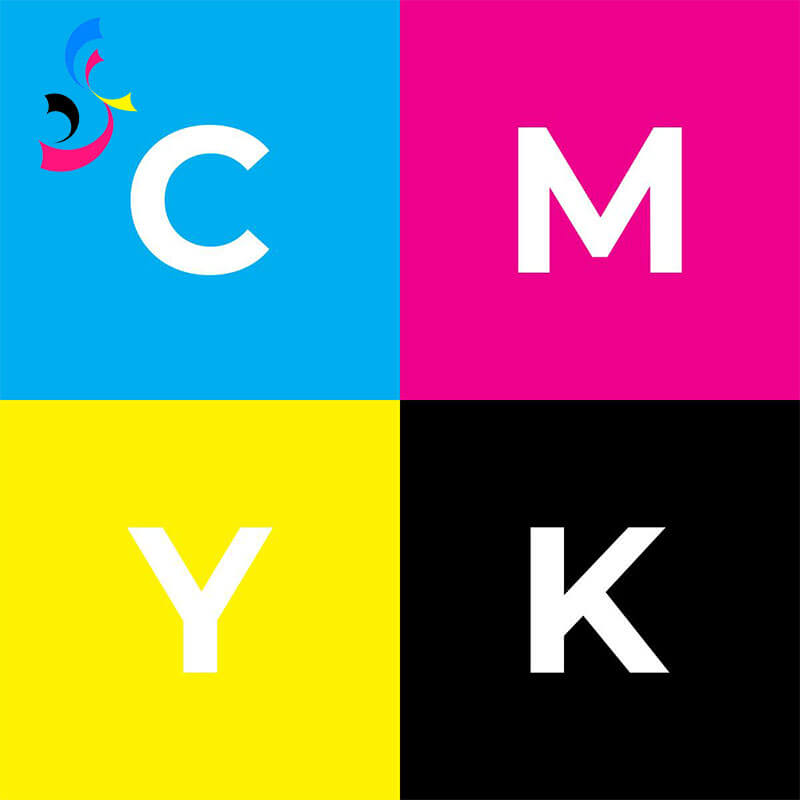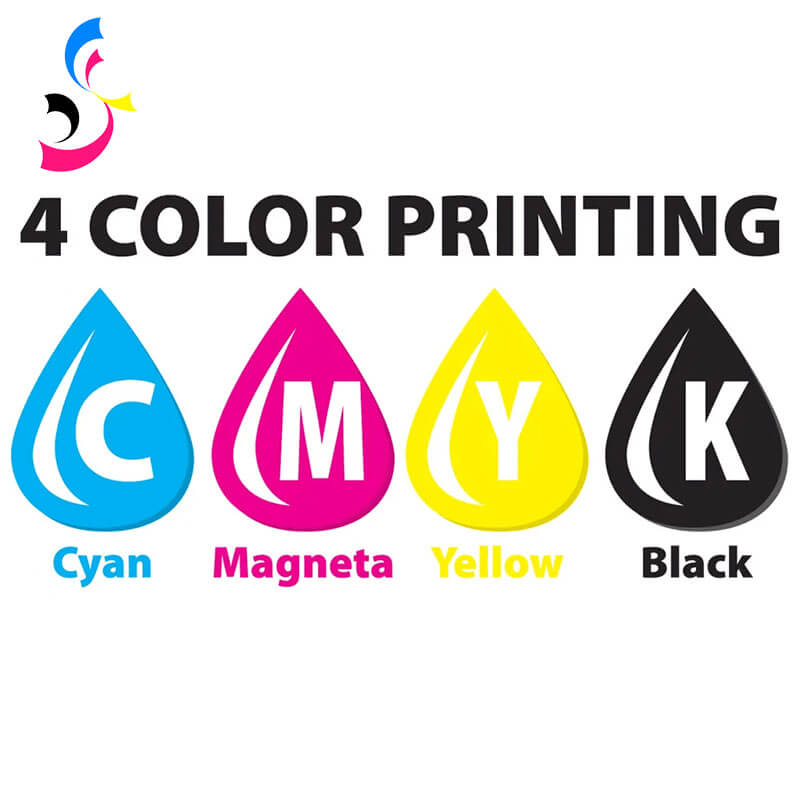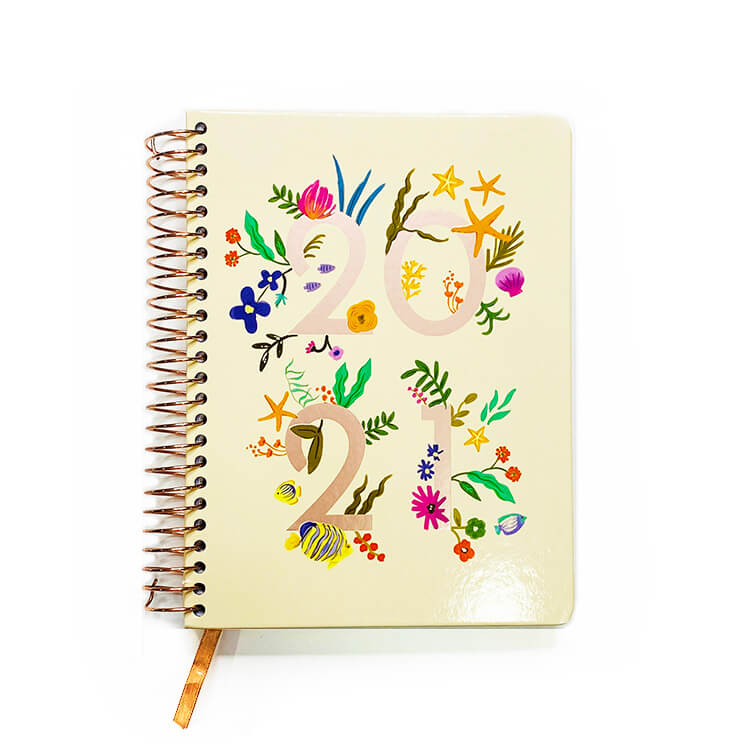What Is the Difference Between CMYK, 4-Color, and Full-Color Printing
 Oct 31,2025
Oct 31,2025

 SESE
SESE
What's the Difference Between CMYK, 4-Color, and Full-Color Printing?
1. Introduction
In the world of printing, terms like CMYK, 4-color, and full-color are frequently used to describe various printing processes. While they may sound similar, each refers to different ways of reproducing colors on paper or other materials. Whether you're printing a brochure, a poster, or a product label, knowing the difference between these terms can help ensure the final product matches your expectations. In this article, we’ll break down what each term means and how it can impact the quality and cost of your printing projects.
2. CMYK: The Standard Printing Process

CMYK stands for Cyan, Magenta, Yellow, and Key (Black), and it is the most common color model used in color printing. The CMYK process is based on the principle of subtractive color mixing, which means that colors are created by subtracting light from a white background. Each color in the model corresponds to one of the four ink plates used in printing.
How CMYK Works:
-
Cyan (C): A bright, greenish-blue ink.
-
Magenta (M): A purplish-red ink.
-
Yellow (Y): A vibrant yellow ink.
-
Key (Black) (K): This is the "key" color, used to add depth and detail, as well as to darken the image.
In this model, inks are layered on top of each other to form the full range of colors. By adjusting the percentage of each ink used, printers can achieve a wide spectrum of shades and tones. However, since it's subtractive, the more ink you add, the darker the result gets.
Why CMYK is Standard:
-
Accuracy in print: The CMYK system closely mirrors how traditional printing presses mix inks to create colors on paper. It’s the most reliable system for producing high-quality printed materials, especially in industries like magazines, brochures, and business cards.
-
Cost-effectiveness: Unlike digital displays, which use the RGB (Red, Green, Blue) color model, CMYK works better for physical materials, reducing costs while maintaining color fidelity in print.
-
Controlled color reproduction: Printers have fine control over the specific amounts of each ink used, which ensures consistent color across different prints.
CMYK is an essential part of the printing industry, providing a standard, reliable method for creating full-color images.
3. 4-Color Printing: The Same as CMYK

In most contexts, 4-color printing is essentially the same as CMYK printing. The term "4-color printing" refers to the use of four ink colors to reproduce a full spectrum of colors in print. These four colors are Cyan, Magenta, Yellow, and Key (Black) — the exact same inks used in the CMYK color model.
Key Points to Clarify:
-
4-Color Process: This term is often used interchangeably with CMYK because the printing process utilizes exactly four colors (cyan, magenta, yellow, and black). The name "4-color" comes from the fact that there are four main colors of ink used to create the image.
-
CMYK vs. 4-Color: While CMYK and 4-color both refer to the same color model, "4-color printing" is more of a general term for any printing that uses this specific process. CMYK, on the other hand, refers to the color model and technical basis of this method.
Why This is the Standard:
-
Reproduction of Full Color: Through the combination of these four primary colors, printers can create millions of possible color variations, enabling the accurate reproduction of images, photographs, and complex designs in print.
-
Widespread Usage: Almost every commercial printing press uses the 4-color process for everything from business cards to magazines, and even packaging.
In summary, 4-color printing is just another name for the CMYK process and is the standard for full-color reproduction in the printing industry. Both refer to the method of mixing cyan, magenta, yellow, and black inks to create a wide range of colors in printed materials.
4. Full-Color Printing: More Than Just CMYK

While CMYK (and by extension, 4-color printing) is the standard for most full-color print jobs, the term "full-color printing" can sometimes refer to a broader spectrum of colors and processes than just the CMYK model.
What's Different About Full-Color Printing?
Full-color printing refers to the ability to print high-quality, rich color images across a range of tones and shades. This isn't limited to just the four inks (cyan, magenta, yellow, and black) of the CMYK process. There are additional techniques or modifications that can be used to enhance the depth and vibrancy of the colors in the final print.
Here are some key points that differentiate full-color printing from basic CMYK:
Extended Gamut Printing:
In full-color printing, some printers use an extended gamut, which incorporates additional inks beyond just CMYK, such as orange, green, and violet. This increases the color range and allows for more precise color matching, particularly for branding or specialty colors.
For example, printers with an 6-color or 8-color process use additional inks to achieve more vibrant and accurate colors, especially for skin tones, subtle gradients, and special colors.
Pantone Spot Colors:
Pantone colors are specific shades used in printing that can be matched exactly, ensuring color consistency across different print jobs and printers. Pantone spot colors are often used in conjunction with CMYK in full-color printing to achieve colors that are difficult or impossible to reproduce accurately with just the four basic CMYK inks.
For example, if a company needs an exact shade of brand blue or gold, a Pantone color may be used as a "spot color" alongside the CMYK process.
Gradient and Specialty Inks:
Full-color printing can also involve specialized inks that provide special effects. Metallics, fluorescents, and special finishes (like gloss, matte, or UV coating) can enhance the appearance of the printed piece and give it a distinct look and feel.
These inks are added in addition to the regular CMYK layers, providing a broader spectrum of colors and effects.
High-Resolution Printing:
Full-color printing generally refers to prints with a high resolution, meaning that fine details, subtle gradients, and complex images are accurately rendered. Printers that do full-color printing are capable of reproducing intricate images with many shades and tonal variations.
Why Full-Color Printing is Used:
-
Vibrancy and Detail: Full-color printing produces images with rich detail and vibrant, true-to-life colors. This is crucial for photographs, brochures, catalogs, and artwork that require high-quality color reproduction.
-
Branding Consistency: Using both CMYK and Pantone spot colors ensures that a brand’s colors are represented consistently across different print runs, materials, and devices.
-
Visual Impact: Full-color printing allows for a wider color gamut, which helps create prints that have greater visual impact, making them more attention-grabbing for advertisements, packaging, and marketing materials.
In essence, while CMYK (4-color printing) is the baseline for color printing, full-color printing can include additional colors, advanced techniques, and higher-quality outputs to achieve more vibrant, precise, and visually stunning results.
5. Key Differences: CMYK vs. 4-Color vs. Full-Color
While CMYK, 4-color, and full-color are often used interchangeably, there are subtle distinctions between these terms, mainly related to the printing process, color models, and the level of color quality. Here’s a breakdown of each term and their differences:
Summary of Key Differences:
| Feature | CMYK | 4-Color | Full-Color |
|---|---|---|---|
| Color Model | Cyan, Magenta, Yellow, Black | Same as CMYK (Cyan, Magenta, Yellow, Black) | CMYK + additional techniques/colors |
| Ink Usage | 4 inks (Cyan, Magenta, Yellow, Black) | 4 inks (Cyan, Magenta, Yellow, Black) | 4 inks plus possible additional inks or finishes |
| Range of Colors | Limited to the CMYK spectrum | Limited to the CMYK spectrum | Can include extended gamut or special inks |
| Use Cases | General printing (basic color jobs) | Standard commercial printing | High-quality, detailed prints (photography, packaging) |
| Special Effects | No special colors or effects | No special colors or effects | May include spot colors, gradients, metallic inks, etc. |
Key Takeaways:
-
CMYK is the core color model for subtractive printing.
-
4-color printing is simply another name for CMYK printing, referring to the use of four inks.
-
Full-color printing goes beyond CMYK, encompassing techniques like extended gamut printing, Pantone colors, and special finishes, resulting in more vibrant, detailed, and high-quality prints.
Ultimately, the main difference is the complexity and quality: while CMYK and 4-color printing are the standard for most jobs, full-color printing may involve additional inks and special techniques for superior color fidelity.
6. When to Use Which Printing Process
Choosing the right printing process—CMYK, 4-color, or full-color—depends on your project’s specific requirements, such as the desired quality, complexity of design, budget, and the end use of the printed materials. Here’s a guide on when to use each process:
Use CMYK (Standard Printing) When:
-
You have a simple design or basic full-color images: CMYK works great for projects that don’t require intricate color details but still need a reliable and cost-effective method for reproducing color.
-
You’re on a budget: The CMYK process is standard and typically the most affordable for basic full-color prints. It’s used by most printing companies and is widely available, making it a good choice for large-scale, low-cost printing jobs like flyers, newsletters, brochures, and business cards.
-
You’re printing for high-volume commercial use: CMYK is the industry standard for large print runs, making it ideal for printing items like magazines, catalogs, posters, and marketing collateral in large quantities.
-
You need to reproduce accurate color for a wide range of images: CMYK is designed to reproduce the widest possible range of colors with just four inks. It's great for general color reproduction but may not capture specialized colors or fine gradients as well as other methods.
Use 4-Color Printing (Same as CMYK) When:
-
You need standard full-color printing with no special requirements: 4-color printing is just another term for the CMYK process, so it’s perfect for most commercial printing needs, especially when you want an easy-to-understand label for the process.
-
You want to use the four basic colors (Cyan, Magenta, Yellow, Black) but need a more commonly understood term**: When clients or designers refer to 4-color printing, they often mean CMYK. It’s ideal when the color requirements are not highly specific, and standard colors will suffice.
-
You’re printing marketing or promotional materials: 4-color printing is common for items like brochures, flyers, postcards, and direct mail pieces, where colors are important but don’t require an extremely high level of precision.
-
You're focusing on larger print runs: Like CMYK, 4-color printing is efficient for mass production, making it an ideal choice for large quantities of business cards, pamphlets, and other standard marketing materials.
Use Full-Color Printing When:
-
You need vibrant, high-quality prints with accurate color: Full-color printing goes beyond just the four inks (CMYK) and can include Pantone spot colors, extended color gamuts, and specialty inks like metallics and fluorescents. This is ideal when you need to exactly match brand colors or achieve a specific look, such as luxury packaging or photographic reproductions.
-
You’re working with detailed, intricate designs: Full-color printing is better suited for printing high-quality images, photos, and complex illustrations. If your design involves gradients, shadows, or subtle color variations, full-color printing can capture the depth and nuance of those details much better than standard CMYK.
-
You require spot colors for precise color matching: If your design includes specific, branded colors (like a particular shade of blue or red), Pantone spot colors may be used in full-color printing. This ensures you get exact color reproduction every time, which is critical for brand consistency in things like corporate stationery, product packaging, or advertising materials.
-
You want to stand out with premium effects or finishes: Full-color printing can involve the use of special inks (e.g., metallic, neon, or fluorescent inks), spot varnishes, embossing, and foil stamping to create a premium look and feel. This is common for high-end packaging, invitations, and luxury brochures where the visual impact is important.
-
You’re printing on unusual materials: Full-color printing processes are often more flexible when it comes to using specialty materials like metallic papers, textured finishes, or clear plastic. The ability to use spot colors and special effects allows for more creativity in terms of textures and finishes.
Quick Summary of When to Use Each Process:
Printing Process |
Best Used For |
|---|---|
CMYK |
Basic full-color prints, general commercial printing, high-volume runs, cost-effective printing for everyday materials like flyers, brochures, and business cards. |
4-Color |
Standard color printing for simple projects with no special color requirements, high-volume marketing materials, and general commercial printing. |
Full-Color |
Premium, high-quality prints with exact color matching (Pantone), high-detail images, complex designs, specialized inks, or finishes like embossing, metallics, and fluorescents. Ideal for luxury packaging, photographic prints, and brand-sensitive materials. |





 Home
Home How to Choose the Right Calendar Binding: A Step-by-Step Guide
How to Choose the Right Calendar Binding: A Step-by-Step Guide  You May Also Like
You May Also Like




 Tel
Tel
 Email
Email
 Address
Address







